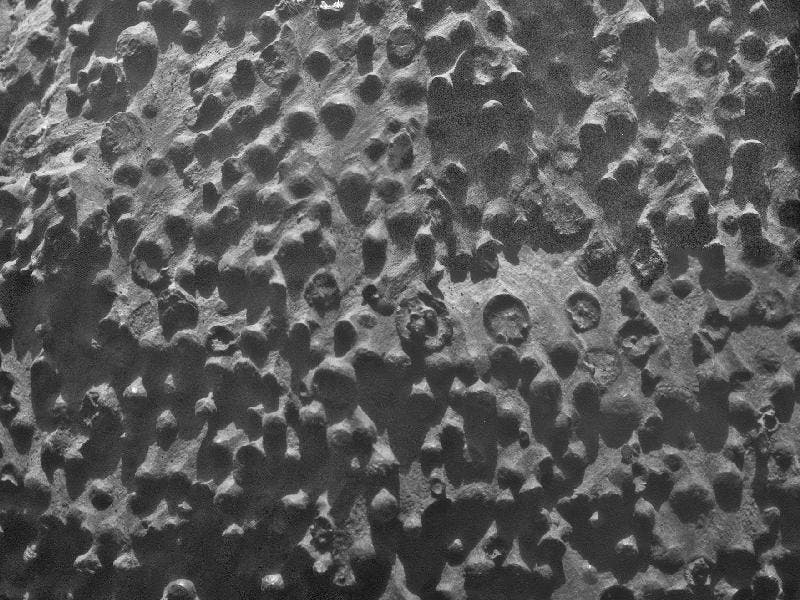In the past couple of months, all Mars-related attention has been almost unanimously shifted towars the Curiosity rover. Not to discredit any of its achievements thus far, which are just appetizers for marvelous fings to come off Curiosity, but the Opportunity rover has been trailing the Martian surface for the past eight years now, long before Curiosity had its first screw designed on the drawing board, and it’s not showing any hints of ending its scientific exploration mission any time too soon. Its most recent find, a group of spherical rocks of peculiar structure and composition, has baffled NASA scientists, reminding the media and common Mars and space enthusiasts alike that there’s another robot on wheels pitching in, and it’s doing a mighty fine job at it.
During its first run on the red planet, some eight and a half years ago, the Opportunity rover came by a group of spherules on the soil, which were dubbed by scientists as blueberries due to their uncanny resemblance, and which upon closer examination were found to beconcretions formed by action of mineral-laden water inside rocks, evidence of a wet environment on early Mars.
This most recent picture snapped by the same Opportunity rover is a 2.4 inch mosaic made out of four separate images which show small spherical objects approximately one-eighth inch in diameter. Opportunity snapped the images with its Microscopic Imager on the western rim of Endeavour Crater in an outcrop called Kirkwood in the Cape York segment.
“This is one of the most extraordinary pictures from the whole mission,” said Opportunity’s principal investigator, Steve Squyres of Cornell University in Ithaca, N.Y. “Kirkwood is chock full of a dense accumulation of these small spherical objects. Of course, we immediately thought of the blueberries, but this is something different. We never have seen such a dense accumulation of spherules in a rock outcrop on Mars.”
Although these may look similar to the Martian blueberries, scientists claim that they’re far from being the same rocks. The analysis is still preliminary, but it indicates that these spheres do not have the high iron content of Martian blueberries.
“They are different in concentration. They are different in structure. They are different in composition. They are different in distribution. So, we have a wonderful geological puzzle in front of us. We have multiple working hypotheses, and we have no favorite hypothesis at this time. It’s going to take a while to work this out, so the thing to do now is keep an open mind and let the rocks do the talking,” continued Squyres.
Apparently, the Kirkwood spherical rock formations are broken and eroded by the wind, presenting a concentric structure. Much more analysis is to be made before the NASA scientists can tell for sure what these peculiar rock formation represent. One thing’s for sure though – “they seem to be crunchy on the outside and softer in the middle,” according to Squyres. Yup, ancient martian sweets anyone?
via NASA










